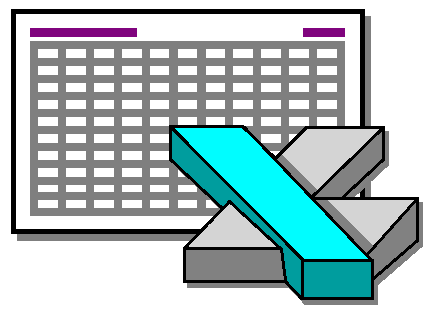„One day artificial intelligence will be built and become better than human intelligence.” – Stephen Hawking
„Artificial intelligence is the future, not just technology.” – Mark Zuckerberg
„Intelligence is possible in any medium from which comprehensive computational models can be built.” – Alan Turing
Artificial intelligence has become a reality, not just a scenario in a Sci-Fi movie. It should not be feared; rather, it should be regarded as a tool to enhance work so that people, society can engage in more interesting, creative activities, while repetitive tasks are entrusted to robots.
Artificial intelligence has become a reality, even in accounting and finance. It started with process automation, and currently, a large part of it is carried out through bots, accelerating the process. This comprehensive process is known as Robotic Process Automation (RPA).
What is RPA?
RPA is a technology that enables the programming of robots to perform routine, rule-based tasks that were previously carried out by humans. These tasks may include data processing, customer service, accounting, document management, and many others. The key feature of RPA is that robots can operate on existing systems and applications without requiring changes to the infrastructure.
Benefits for companies and employees?
- Increased efficiency: Robots can perform tasks faster and more accurately than humans, leading to a significant increase in operational efficiency.
- Cost reduction: Eliminating manual work leads to a significant reduction in operating costs for companies.
- Improved quality: By eliminating human errors, work quality improves, resulting in customer satisfaction and company reputation.
- Scalability: RPA enables easy scaling of operations, allowing companies to adapt to changing market needs. Scaling operations involves both quantitative and qualitative growth. This means not only increasing production or service delivery but also improving processes, optimizing resources, and ensuring that the company continues to operate smoothly and efficiently, even under increased demand.
- Employee freedom: With RPA, employees can focus on more valuable tasks that require creativity and analysis, while robots handle routine tasks.
AI in the BPO/SSC sector
RPA is already being used (as of 2024) in the BPO/SSC sector and banks on a large scale. These changes are happening dynamically, in areas such as:
- Automation of accounting processes, including invoicing, payment reconciliation, and financial reporting.
- Customer service, including responding to inquiries, handling complaints, and managing customer interactions.
- (HR) Personnel management, including recruitment processes, time management, and employee IT system support.
- Data analysis, including processing and analyzing large datasets to detect trends and forecast customer behavior.
An important challenge facing every corporation is the integration of RPA with existing systems: RPA must be integrated with existing IT systems, which can be complex and time-consuming, and also culturally – introducing RPA requires a change in organizational culture and the way of thinking about work.
AI in banking
AI is also being implemented in the banking sector. Customers are using it, for example, through contact with a bank chatbot or a more advanced banking website, from which they can extract reports on their accounts and considering various criterias. Credit and consolidation decisions are also made by an algorithm that connects to the Credit Information Bureau (BIK) and analyzes our creditworthiness.
- Chatbots – chatbot customer care. One of the main benefits of AI in banking is the use of conversational assistants or chatbots. Unlike employees, chatbots are available 24/7, so simple queries that don’t receive a response are redirected to employees during their working hours.
- Money laundering and financial fraud: AI can help detect fraud more efficiently than humans, thanks to the analysis of large amounts of data and the application of various algorithms.
- Credit and consolidation decisions: Banks use AI-based systems to make more informed, secure, and profitable credit decisions. Currently, many banks still rely on credit history, customer references, and bank transactions to determine creditworthiness. However, these credit reporting systems are far from perfect. AI-based systems can analyze behaviors and patterns to determine whether a customer with limited credit history can be a good borrower. The challenge in using AI-based systems for credit decisions is the risk of errors resulting from entered data and ethical issues associated with them. Banks looking to use machine learning must try to eliminate the impact of erroneous data and introduce ethics training into AI training processes.
AI and SEPA payments
Artificial intelligence (AI) can be used in SEPA* (Single Euro Payments Area) from the perspective of:
- Risk and fraud analysis: Artificial intelligence can be used to analyze SEPA transactions to detect suspicious behavior patterns, allowing for faster detection of fraud and abuse cases.
- Automation of payment processes: AI can automate processes related to SEPA payments, allowing for faster and more efficient payment processing and eliminating human errors.
- Service personalization: Artificial intelligence can analyze payment and customer behavior data, allowing for the customization of payment offerings, such as offering customers appropriate payment services or suggesting optimal payment terms.
- Customer profiling: AI can analyze customer data and their payment behaviors to create detailed customer profiles, enabling better matching of payment offerings to their needs and preferences.
- Processing large amounts of data: SEPA generates huge amounts of payment-related data. Artificial intelligence can help efficiently process this data and extract valuable information that can be used for business decision-making.
- Payment optimization: AI can analyze SEPA payment data in real-time, allowing for payment process optimization, minimizing transaction costs, and reducing delays.
*SEPA, or Single Euro Payments Area, is a European Union initiative aimed at standardizing payment systems in euro zone countries and non-euro zone countries (currently 36 countries) that use the euro as the settlement currency. SEPA aims to facilitate cross-border euro payments and increase financial market integration in Europe.
To sum up
The automation of financial processes in banks and Shared Services Centers (SSCs) plays an important role in the digital revolution of the modern financial sector. Through the use of advanced technologies such as Robotic Process Automation (RPA), artificial intelligence (AI), and data analysis, both industries can revolutionize their operations and improve customer service quality.
Introducing automation of financial processes brings a number of benefits, such as reducing operating costs, increasing efficiency, improving service quality, and better risk management. Thanks to automation, banks can react more quickly to changing market conditions, introduce new products and services, and compete in an increasingly digital business environment.
Nevertheless, implementing automation of financial processes also involves certain challenges, such as restructuring processes, ensuring compliance with regulations, and proper data management and information security. Key to success is proper organization preparation, investment in modern technologies, and effective change management.
In summary, the automation of financial processes is an important element of the transformation of the banking sector and Shared Services Centers (SSCs), enabling companies to achieve higher levels of efficiency, flexibility, and innovation. It is not only a step towards digital transformation but also a key element of development and competitiveness strategy in a dynamic business world.


